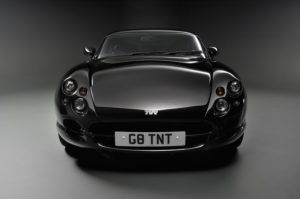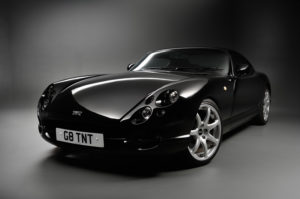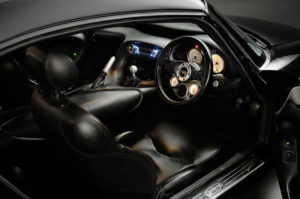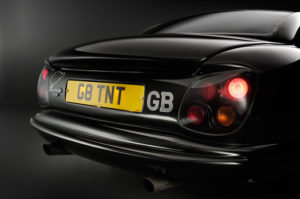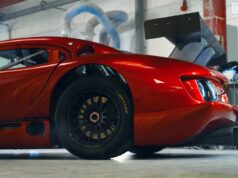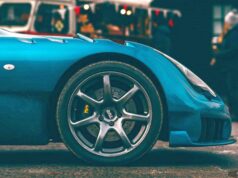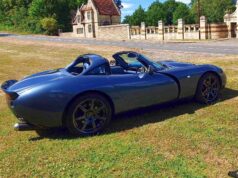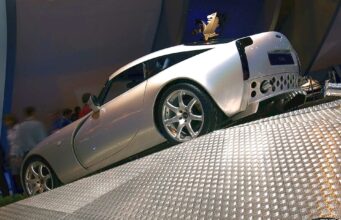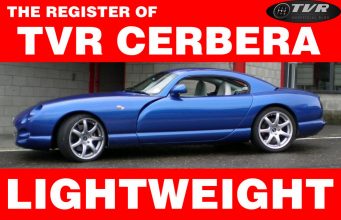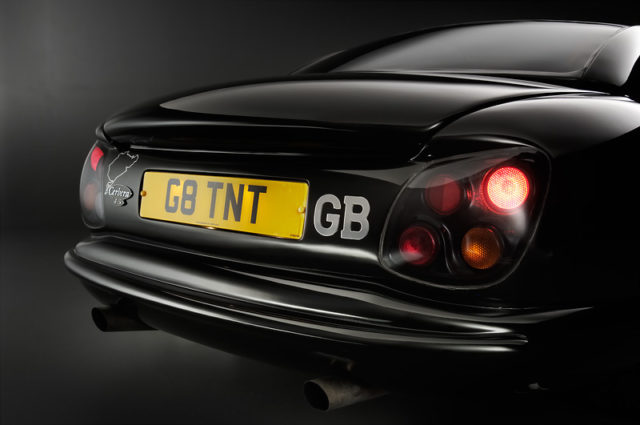
The TVR Cerbera made its first appearance at 1993 London Motor Show. Originally, the TVR Cerbera was designed to be powered by the TVR Power Rover based engines but it was decided that TVR’s own engine, the Speed Eight, would be a more suitable power plant. The Cerbera was the first roadgoing TVR to feature the Speed Eight engine (see the related article).
THE COCKPIT
With the Cerbera’s interior, TVR have discarded conventional thinking and have created a dashboard binnacle in which all the instruments are right in front of the driver. The clock and the fuel gauge, visible through the steering wheel, and a fresh air vent are situated under the steering column and are adjustable for reach and rake with it. Mounted on the steering wheel are controls for the main beam, windscreen washers and wipers as well as the horn.
The Cerbera was more than a normal 2+2 in that, in terms of the configuration of its seating arrangement, it would be better described as a 3+1. The front passenger seat is able to slide forward further than normal, thereby freeing a substantial amount of extra legroom for the passenger sitting directly behind. Attention has been paid to the ease of access to the rear seats which in too many 2+2s is unnecessarily difficult. Therefore, the Cerbera’s doors are long enough to make getting into the back seats much easier.
THREE ENGINES
The TVR Cerbera 4.5, after the TVR Cerbera Speed Six and the TVR Cerbera 4.2 topped 420 bhp and 380 ft.lbs. of torque. Getting to 60 mph in 3.9 seconds, 100 in 8.1 and 150 in 17.9, the Cerbera 4.5 has been one of the fastest road cars in existence. With larger brakes, modified suspension and larger wheels and tyres, the Cerbera 4.5 offered the handling and braking to match its performance, stopping from 100 mph in only 3.8 seconds. The 4.5 Cerbera also includes a Hydratrak speed sensitive differential as standard. For the 2000 model year, lights, A pillars, roofline and seats were changed and lightweight bonnet, doors and bootlid were introduced.

